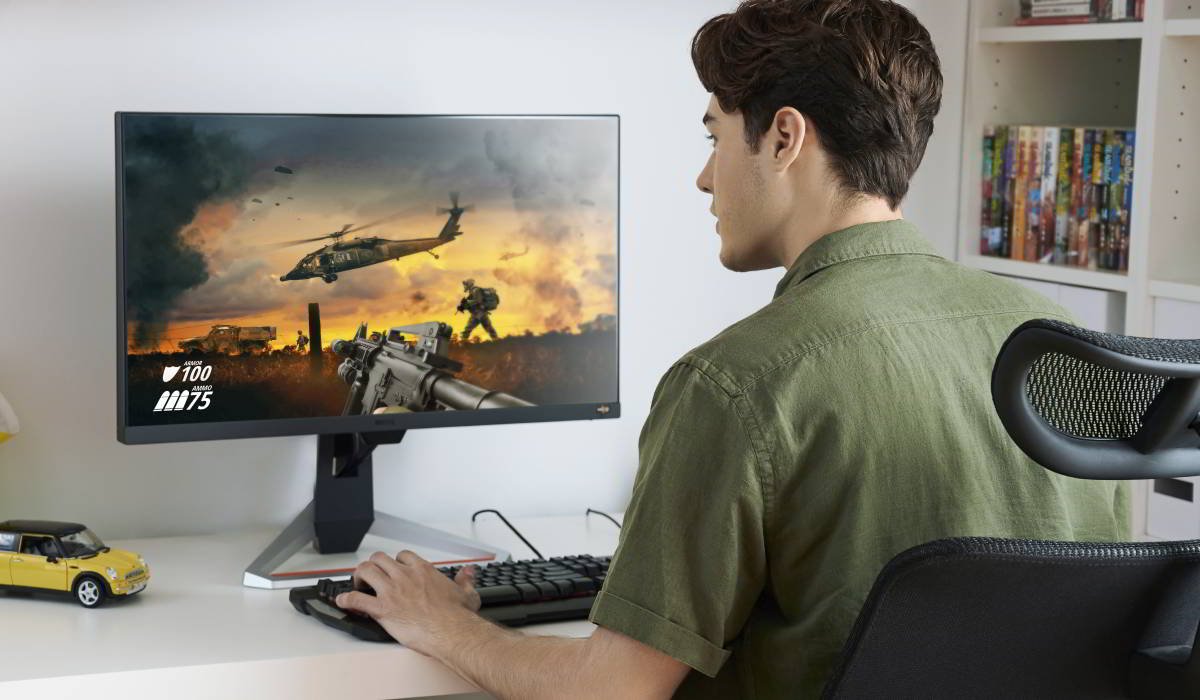Screen tearing is a visual artifact that occurs when a monitor’s refresh rate is out of sync with the frame rate of the content being displayed. This results in a “tearing” effect where the top and bottom of the screen appear to be separated, with the bottom portion showing a different frame than the top. This can cause a jarring and distracting viewing experience, particularly when playing fast-paced games or watching videos. The most common way to prevent screen tearing is to use a technique called V-Sync, which syncs the frame rate of the content with the refresh rate of the monitor. Some monitors also have a built-in feature called Adaptive Sync which can synchronize the frame rate of the content with the monitor.
Buying Guide for what is screen tearing]
- Check the refresh rate of the monitor: One of the main causes of screen tearing is a mismatch between the refresh rate of the monitor and the frame rate of the content being displayed. Make sure to check the refresh rate of the monitor before buying, and ensure that it is high enough to handle the type of content you will be viewing.
- Look for monitors with Adaptive Sync technology: Some monitors come with built-in technology such as G-Sync or FreeSync that synchronizes the frame rate of the content with the refresh rate of the monitor, preventing screen tearing. If you are a gamer, look for a monitor that has this technology to reduce screen tearing.
- Check the resolution and aspect ratio: Screen tearing can also be caused by a mismatch between the resolution and aspect ratio of the monitor and the content being displayed. Make sure to check the resolution and aspect ratio of the monitor and ensure that it is compatible with the content you will be viewing.
- Check the input lag: Input lag is the amount of time it takes for a monitor to display an image after it receives the signal from the computer. A high input lag can cause stuttering and screen tearing. Look for a monitor with low input lag for a smooth viewing experience.
- Read reviews and compare features: Before buying a monitor, read reviews and compare features of different models to ensure that it is suitable for your needs. Pay attention to user feedback and experiences with screen tearing.
Please note that while these steps can help you choose a monitor that reduces screen tearing, it’s not a guarantee, and some tearing may still occur depending on the content, settings and other factors.
What is screen tearing?
Screen tearing is a visual artifact that occurs when a monitor’s refresh rate is out of sync with the frame rate of the content being displayed. This results in a “tearing” effect where the top and bottom of the screen appear to be separated, with the bottom portion showing a different frame than the top. This can cause a jarring and distracting viewing experience, particularly when playing fast-paced games or watching videos.
What causes screen tearing?
Screen tearing is typically caused by a mismatch between the refresh rate of the monitor and the frame rate of the content being displayed. When the frame rate of the content exceeds the refresh rate of the monitor, it can result in screen tearing. Other factors that can contribute to screen tearing include a mismatch between the resolution and aspect ratio of the monitor and the content, and high input lag.
How can I prevent screen tearing?
The most common way to prevent screen tearing is to use a technique called V-Sync, which syncs the frame rate of the content with the refresh rate of the monitor. Some monitors also have a built-in feature called Adaptive Sync which can synchronize the frame rate of the content with the monitor. Another option is to use a monitor with a higher refresh rate.
Will screen tearing damage my monitor?
Screen tearing itself will not cause damage to a monitor, but it can be an indication of other issues such as a mismatch between the refresh rate and frame rate, or high input lag. It is important to check these factors and address them to prevent other issues.
Is it possible to completely eliminate screen tearing?
It is possible to greatly reduce or eliminate screen tearing by using techniques such as V-Sync or Adaptive Sync, and by using a monitor with a high refresh rate. However, in some situations, such as when the frame rate of the content is extremely high, it may not be possible to completely eliminate screen tearing.
